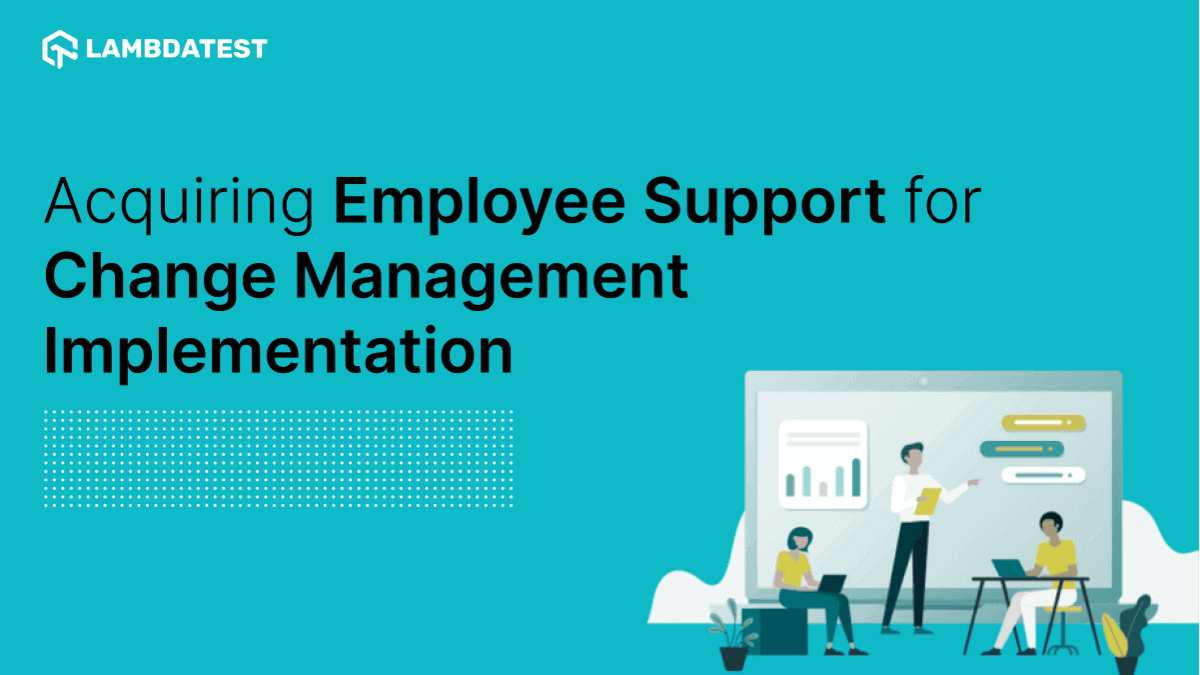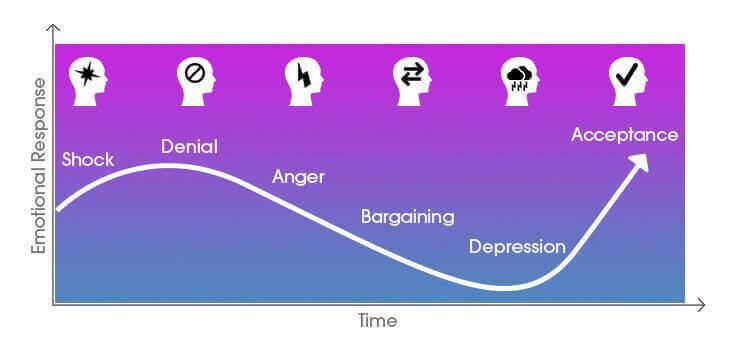Acquiring Employee Support for Change Management Implementation
David Tzemach
Posted On: November 2, 2022
![]() 9585 Views
9585 Views
![]() 7 Min Read
7 Min Read
Enterprise resource planning (ERP) is a form of business process management software—typically a suite of integrated applications—that assists a company in managing its operations, interpreting data, and automating various back-office processes. The introduction of a new ERP system is analogous to the introduction of a new product into the market. If the product is not handled appropriately, it will fail, resulting in significant losses for the business. Most significantly, the employees’ time, effort, and morale would suffer as a result of the procedure.
ERP adaptations may appear to be a sure thing since they are imposed on the user, but, as with new products, they are not always embraced with open arms. Marketing teams devise many ways to perform cross browser testing of the product and expose it to their intended audience; if these techniques are ignored with ERP conversions, and without proper testing strategy, you risk the same dissatisfied consumers, as well as losing productivity and time, if not employees.

End-user training is a vital success factor for every ERP adoption. End users require training on three fronts: changes in business processes as a result of ERP deployment, training on the actual ERP solution, and, most significantly, training on change management. Ineffective change management is one of the leading causes of ERP failures. As a result, training on the procedures and ERP solution must be coordinated with change management training. You may argue that this is “not a test issue,” but if you care about software quality, it is everyone’s problem. Instead, I propose that we address ERP conversions full-on, portraying quality employees as change management specialists and assisting in their implementation.
The change curves
One of the change management approaches is based on the change curve established by psychiatrist Elisabeth Kubler-Ross in the 1960s. This paradigm, sometimes known as the five stages of grieving, can be used as a baseline to understand employee reactions and performance changes when firms announce a new ERP implementation. Employee emotions to change may be divided into three key stages based on Kubler-Ross’ change curve:

Understanding these emotions enables more effective end-user training planning during ERP implementation.
Stage 1: Shock and Denial
Shock is the initial reaction to any change. The first question that employees have is why. Employees may find the new concept distasteful and hope it never becomes a reality. They may decide to disregard the impending shift and continue to use the old methods, blind to the recommended changes. Both productivity and performance may suffer if not properly managed.
Employees are not yet fully aware of the implications of the move at this level. This is an excellent moment to engage employees in an honest discussion about the present system’s challenges, delays, mistakes, and cost overruns, as well as to investigate the benefits and advantages of the new system. You should also highlight how improvements in procedures and systems will improve their work routines and make their jobs simpler. Employees must be informed about the need for change as well as the organization’s aim for company expansion. This is also the opportunity to offer a general overview of the ERP project.
It is also critical to recognize that change will be difficult, but that it will be easier with employee support and commitment. This may be accomplished through the use of training, interactive online courses, and so on. These tactics keep the debate continuing while gradually luring employees out of denial and encouraging them to consider the new system.
Stage 2: Anger and Scepticism
Employees may experience resentment, resistance, and anxiety over the unknown when they become aware of the reality of having to endure a new system. There is also a natural hesitation to leave their comfort zones. Typically, this manifests itself as frequent criticism of the new system, attempting to demonstrate that the previous system is superior and cheaper, and casting doubt on the efficiency and functioning of the new system. All employee inquiries must be calmly addressed by supervisors, and they must take the time to try to diffuse any underlying resentment.
Employees will discover strategies to transition to the new ERP system once they realize that change is unavoidable. Employees are likely to have concerns and inquiries at this point. Will they be obsolete? Will their tasks and positions change? If this is the case, will they be able to adapt to their new roles and responsibilities? What is the point of going through all of this? In what ways does it have an immediate effect on the business?
Employees must believe their voices are heard and that the business is responsive to their worries. Business leaders can be designated as change agents and mentors to assist individuals. Another possibility is to create an online forum, similar to a social media group (Facebook, Teams, and so on), where employees may anonymously share their questions, opinions, and concerns. As a result of the input, management will have a better concept of how to approach change management.
It is necessary to devise a logical and organized approach to addressing these challenges. When you know what your workers are most concerned about, you can begin addressing those concerns through workshops, group discussions, and so on. At this level, the shift might be addressed in greater depth, touching on individual roles and the adjustments that may be required. Employees need continual reinforcement that their services are needed at this time, and they must be mentored and supported at every level of project execution.
Stage 3: Acceptance and Integration
Acceptance is the last step, in which employees are convinced that the new system will benefit them and the business. They have now begun to integrate and use the new system. Employees are likely to experience dissatisfaction and challenges as they integrate into the new system, and technical issues and inquiries may continue to surface. Employees may become irritated and lose trust in the new system if these difficulties are not addressed promptly. As a result, it is critical to address problems as soon as possible and to give training, guidance, and encouragement.
You may have a unified platform where training, troubleshooting, and engagement with subject matter experts are available (to reduce expenses and duplication of work). Learning specialists who understand how people work should create online courses that imitate the ERP program. Topic matter experts give subject expertise, while learning experts choose the best approach to transfer that information to employees and simulation-based techniques may be used to produce engaging, dynamic, and fascinating online courses.
Consider establishing workshops in which workers observe how the software works, have hands-on experience trying out multiple options in a fail-safe setting and complete the assignments independently to assess their expertise. These free learning courses can be divided into small modules and tailored to the needs of the end customers. Employees can then access courses or modules that are relevant to them. The program might also include a social network where employees can share their stories, express their concerns, and ask for responses. Subject-matter experts and mentors must be on hand to monitor and respond to user questions.
To offer positive encouragement to employees, any tiny gains acquired throughout the deployment of the new system should be made public through advertising, celebrations, and so on. An environment of accomplishment and momentum boosts employees’ morale, demonstrates that their efforts are valued, and communicates the overall success of the project.
Closing
Accepting change is difficult, and continual and frequent communication is essential. Luckily, there exist low-cost technical infrastructures. Even SMBs can develop seminars, interactive seminars, and other tools to support the simple transfer of knowledge. This helps to address fears regarding the new system’s implementation. Any ERP deployment will encounter issues and technological difficulties. When change is managed intelligently and proactively, employees will support the effort rather than fight it.
Got Questions? Drop them on LambdaTest Community. Visit now













